Give Your Colleagues Their Daily Dose Of Appreciation — Bonus, Rewards, and Feedback
Show Your Mate Your Appreciation
Everybody becomes happy when getting a "Thank you". By saying these magical words "Great Work, thank you" or "Done awesome, you helped me a lot" you place all of a sudden, a smile on the face of your vis-à-vis. Everyone loves to be rewarded and be encouraged by a job well done.

Giving or accepting a praise or a thank-you is a two-dimensional relationship. As the giver, I show my gratitude for taking a benefit of an effort you – the receiver – did for me.
And you – the receiver – feel good. Because of being recognized (by me). You get the message that I do not take your endeavour for granted, that it is special for me. That I appreciate it. And that I appreciate you as a person due to doing me this favour. You feel you have enlighted my life. And most of all, you realize that at a certain moment in my life, you have been important to me.
And only because I say these tiny words "Thank you" to you, I enlight your day. You feel happy. And I had shown you my appreciation, thankfulness, and reverence.
And, notably, I give you a kind of bonus, a reward as a compensation for doing me the favour.
Why The Carrot & Stick Fail
Sadly to say, in our modern business world, this appreciative gratitude of a thank-you is perverted by most bonus and employee performance systems installed. Many companies treat their employees like corporate monkeys, so-called CoMos: if you give them time to time a banana, they will parry you.
The essential idea behind:
High-performing employees are being rewarded by a carrot, low-performer are be punished by the stick. The final essence: everyone in the company is pushing oneself more to her limits.
 It's up to you to go with this idea of humans and the correlated relationship between a firm and its employees. The idea stems from Taylorism and its notion of Scientific management, a management model introduced in the early 20th century. Taylorism aims to achieve maximum job fragmentation to minimize skill requirements and job learning time and separates execution of work from work-planning. The managers do the planning, the workers are executing the managerial plans.
It's up to you to go with this idea of humans and the correlated relationship between a firm and its employees. The idea stems from Taylorism and its notion of Scientific management, a management model introduced in the early 20th century. Taylorism aims to achieve maximum job fragmentation to minimize skill requirements and job learning time and separates execution of work from work-planning. The managers do the planning, the workers are executing the managerial plans.
However, today in the 21st century we do not live in a world embossed by primarily manufacturing floor shops and processes anymore. Instead, we live in a knowledge-based world. The old-fashioned floor shop is vanishing. It is replaced by either software-driven hardware items — mechatronics, embedded systems, and digital services without any physical representation at the first glance for the end users. At today's production sites, collaboration beyond department silos, social networks, adaptive systems and dealing with complexity are the keywords of 21.th century management.
Furthermore, recent scientific studies showed: the Carrot-Stick rewarding system does not work in knowledge-driven environments any longer. Much worse, it is contra productive because it undermines the high-performers motivation.
Szu-chi Huang, a professor at Stanford Graduate School of Business and her team showed in a recent study, that people being in a competition fare ahead early, strain oneself very much because the victory seems possible. However, when being fare ahead late or at the end of the competition, this leads to a kind of ease, because people feel too secure (to win).
Despite this, bonus systems are still implemented. Despite the fact, that performance-metric-based paychecks do not work. Despite that experts have known for decades that there is no proven correlation between bonuses and performance.
It may come as a shock to many to learn that a large and growing body of evidence suggests that in many circumstances, paying for results can actually make people perform badly, and that the more you pay, the worse they perform.
— Nic Fleming, “The Bonus Myth”, 2011
Intrinsic and Extrinsic Motivators
If money is not an effective motivator, what else? — In general, people motivate themselves by two ways: with intrinsic or with extrinsic stimuli. Money and any other material bonus are extrinsic motivators. In contrast, status and acceptance of a group or autonomy and freedom are intrinsic motivators. The more people do not have to fight for daily life needs — food, shelter and physical safety — the less important become physical goods. Instead, more and more relevant become immaterial goods like friendship, love, intimacy, trust, and acceptance, receiving and giving affections. This is known as Maslow's Hierarchy of Needs.
On December 29, 2009, Daniel Pink published his now famous book "Drive: The Surprising Truth About What Motivates Us". In this text, he argued 2009 that human motivation is largely intrinsic and that the aspects of this motivation can be divided into autonomy, mastery, and purpose.
In 2011 Google researchers made an internal survey, code-named Project Aristotle, to discover the secrets of effective teams at Google. They found out, that psychological safety is a kind of container for trust and autonomy in the team, and purpose of individual work. If people feel psychologically safe, they are highly motivated and effective.
Jurgen Appelo sum this up
There is a common assumption among managers that nothing works like money when you want to make people work harder, longer, or more efficiently. It’s also often assumed that such an extrinsic motivation works best when implemented as a financial bonus. Both assumptions are wrong.
— Jurgen Appelo, 2013
With the Management 3.0 tool "Moving Motivators" you can easily check, which motivators trigger you, or your team.
Moving Motivators is a card deck game based on the ten intrinsic desires which Jurgen Appelo derived from the works of Daniel Pink, Steven Reiss, and Edward Deci. You prioritise what motivates you, how a change can affect those motivators, and then talk about that change management in the context of your organisation.
How To Reward And Recognise Employees Effectively
Employees who feel appreciated are more positive about themselves and their ability to contribute to the project's or company's success and goals.
When you give people positive affirmations effectively, you reinforce, the actions and behaviors you most want to see people repeat. Your recognition reinforces the employee's understanding of how you would like to see him or her contributions in the workplace.
In many organisations, recognition and financial reward go one for the other. This approach misses the point of recognition because of two issues:
- As I aforementioned: People are more motivated by intrinsic rewards than by money. Financial reward is a great thing, don’t get me wrong, but it’s not the equivalent of true recognition.
- Usually, managers give feedback to their employees by annual employee performance reviews. In this ceremonial meetings, employees performance is measured by some KPIs and compared to metrics agreed in the last year review.
Feedback should come immediately — not after half a year — or worst — after a full year. People need recognition of the extra effort. They need to "feel" it, right at the moment. Feedback should come spontaneously, by heart. — "Great job!", you remember?
In Management 3.0 Jurgen Appelo recommends Six Rules for Rewards to support an ongoing environment of recognition, Jurgen Appelo 2013:
- Don’t promise rewards in advance.
- Keep anticipated rewards small.
- Reward continuously, not just once.
- Reward publicly, not privately.
- Reward behaviors, not only outcomes.
- Reward peers, not only subordinates.
The easiest way to show immediate appreciation are Appreciation Cards. You can create a wall of kudos, proudly showing them all the time. Or you are building a “shout-out shoebox” – a Kudo box – in which you collect the kudos and then have monthly celebrations, where you read out the kudos.
Techniques and Tools
There are several tools available to show appreciation. The range spans from techniques to moderate or facilitate workshops, or to online services and physical objects to show recognition at the business place.

Appreciation Cards, Kudo Wall And Kudo Box

Happiness Door — An Alternate Feedback Tool for Events, Workshops, and Retrospectives

Happiness Hacking 1 – Tools To Track Happiness On Project And Team Level

Happiness Hacking 2 – 30 Happiness Strategies To Try in the Workplace

Happiness Index — How to Measure Something So Difficult To Catch

Happiness Index Tools

Happy Crisper Index
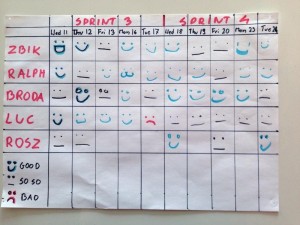
Niko-Niko Calender — Pros & Cons

Six Rules To Give Rewards

The Gruffalo Kudo - The Appreciation Challenge Cup

Tools To Show Your Appreciation
Further Readings
Books
- Daniel Pink: Drive: The Surprising Truth about What Motivates Us. New York, NY: Riverhead Books, 2009.
- Jurgen Appelo: #Workout. Games, Tools & Practices to Engage People, Improve Work, and Delight Clients. Happy Melly Expres, Rotterdam, 2014
- Bob Nelson: 1501 Ways to reward employees. Workman Publishing, New York, 2012.
Internet
- Nic Fleming, The Bonus Myth: How Paying for Results can backfire, New Scientist 2807, 2011.
- Daniel Pink: The Puzzle of Motivation. TEDGlobal 2009.
- Scott Whitlock: What Motivates Makers. Contact and Coil | Nearly In Control.
- Jurgen Appelo: The 6 Rules for Rewards. How to Move from Extrinsic to Intrinsic Motivation. Medium.com, 2013.
- re:Work - Guide: Understand team effectiveness. rework.withgoogle.com.
- Charles Duhigg: What Google Learned From Its Quest to Build the Perfect Team. The New York Times, Feb. 25, 2016.
- J. Antony Xavier: From Employee Engagement To Employee Satisfaction. LinkedIn, Jul. 2, 2014.
- Paul E. White: Vibrant Workplace. Northfield 2017.
- Gary Chapman. Paul White: The 5 Languages of Appreciation in the Workplace: Empowering organisations by Encouraging People. Northfield 2012.
 Give your colleagues, co-workers, and friends a smile — give them appreciation! Use this free, printable Plays-In-Business appreciation card template.
Give your colleagues, co-workers, and friends a smile — give them appreciation! Use this free, printable Plays-In-Business appreciation card template.





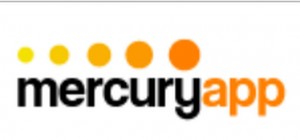


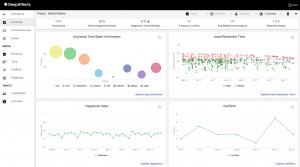






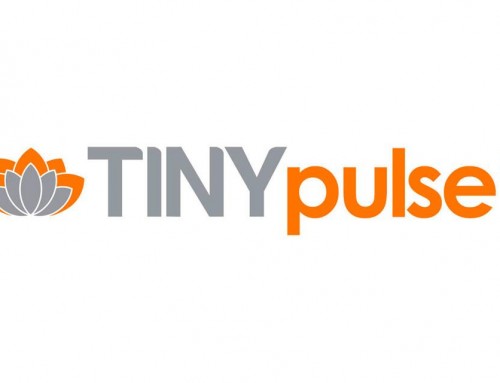
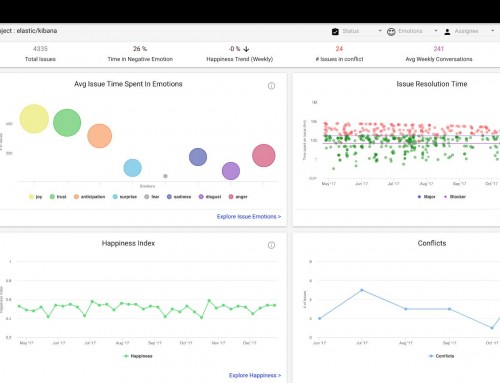
Leave A Comment